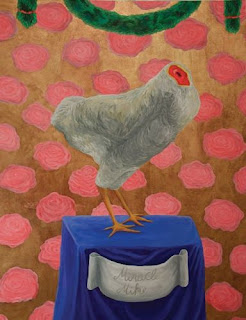3-7 October 2011, Hong Kong Convention and Exhibition Center
FINE ART ASIA 2011 is unique, the only fair in Asia presenting a combination of Fine Art and Antiques. This year FINE ART ASIA 2011 will present its strongest ever international line-up, with 100 renowned, selected dealers from Asia, Europe and the USA
Now in its 7th edition, FINE ART ASIA 2011 has grown in size and stature, with more participation by leading international galleries and a high level of quality of exhibits never seen before under the same roof in Hong Kong or anywhere in Asia . More than 5,000 works of art will be exhibited, with a total value of over HK$2 billion. This indicates a significant turning point in the appreciation of Western and Oriental fine art among many informed collectors in Asia .
The fair will showcase Asian and Western Art and Antiques, Fine Art Jewellery and Silver, and Modern and Contemporary Art. The outstanding array of museum-quality exhibits ranges from ancient Chinese bronzes and stone wares, Himalayan bronzes, Chinese ceramics and works of art, furniture, textiles and jades, to fine art jewellery, antique silver and exceptional Old Masters, Impressionist, Modern and Contemporary paintings and sculpture from both Asia and the West.
Impressionism and Modern Art
Robert Bowman Gallery,
Mallett, London Hong Kong for the first time and will showcase The Cannons Armchairs, a highly important and historic pair of George I gilt gesso open armchairs of grand proportions, made in circa 1716 for the Chapel at Cannons, in Middlesex.
Rossi and Rossi, London Tibet Tibet
The ten heads below symbolize the steps on the path to enlightenment of the Buddha, and the principal hands held before the heart symbolically protect the ratna jewel of this enlightened state. This is one of the largest recorded early Tibetan bronzes of this iconic form of the deity. The statue has a mesmerizing effect with the piercing gaze of the silver eyes.




























































